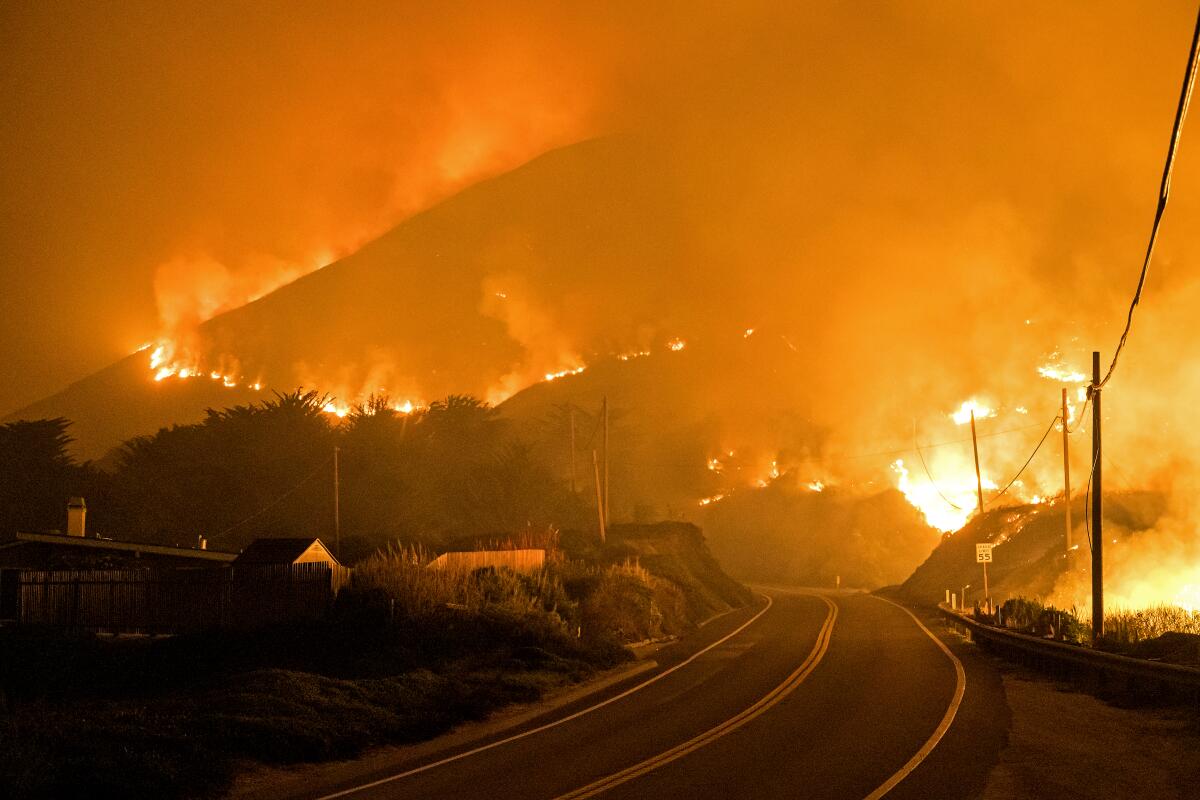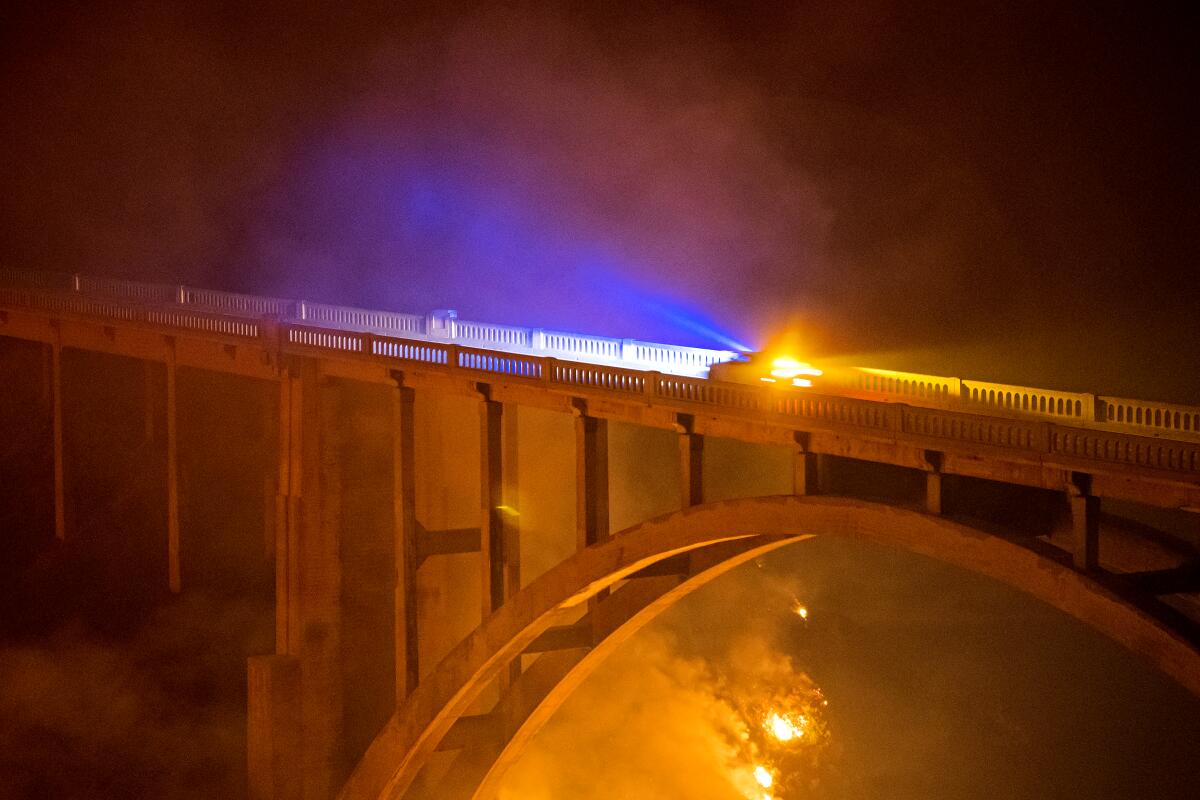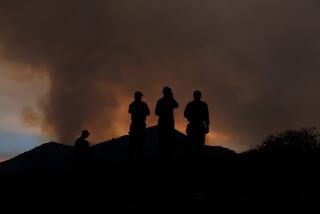Big Sur wildfire burn zone not as large as feared

- Share via
A wildfire that broke out north of Big Sur and forced roughly 500 people from their homes amid high winds Friday night has not burned as many acres as officials initially feared.
The rare January brush fire ignited near Palo Colorado Road and canyon in Monterey County around 5 p.m. Friday. The blaze whipped through the area overnight, fanned by high offshore winds burning in dry vegetation, according to meteorologist Brooke Bingaman with the National Weather Service’s Monterey office.
After growing to 100 acres in a few hours Friday, officials estimated the blaze had swelled to 1,500 acres by Saturday morning after crossing Highway 1 and forcing hundreds of residents to evacuate.
But by Monday morning, more accurate mapping provided by the California Department of Forestry and Fire Protection showed the blaze, dubbed the Colorado fire, had burned about 700 acres.
After Friday’s initial gusty winds subsided, firefighters were able to get a better handle on the blaze, which at one point was threatening the iconic open-spandrel Bixby Canyon Bridge. On Monday evening, the fire was 40% contained, Cal Fire officials said.
Strong winds toppled trees and downed power lines across California over the weekend.
Over 200 structures remain threatened, and one nonresidential building, identified as a yurt, was destroyed in the fire, Cal Fire firefighter Justin Hollingshead said.
Highway 1 remained closed from Yankee Point to near the entrance of Andrew Molera State Park in Big Sur, authorities with the Monterey County Sheriff’s Office said Monday.
Forecasts show an increase in humidity and offshore moisture will spread over the area where the wildfire is burning as winds continue to dissipate, dropping to 5 to 10 mph winds with 15-mph gusts. While Big Sur normally has a robust rainy season, the weather service said January has been unseasonably dry.
“The fuels didn’t get as much moisture as is typical for this time of year,” Bingaman said. “The offshore winds create a drying effect as well. All it takes is a single spark to ignite a wildfire that is then fed by the winds.”

Several years of drought have created unusually dry conditions for California and have stretched fire season beyond the usual summer months, Bingaman said.
“In California, we’re not just talking about the summer months being fire season anymore,” Bingaman said. “People need to be vigilant throughout the entire year.”
Unfortunately, that means people who live in heavily wooded areas should be prepared to evacuate their homes during all seasons.
“Sometimes, people only have 15 minutes to leave their homes. People have to be prepared in case they get that knock on the door,” Bingaman said.
The cause of the Colorado fire remains under investigation.
More to Read
Sign up for Essential California
The most important California stories and recommendations in your inbox every morning.
You may occasionally receive promotional content from the Los Angeles Times.










